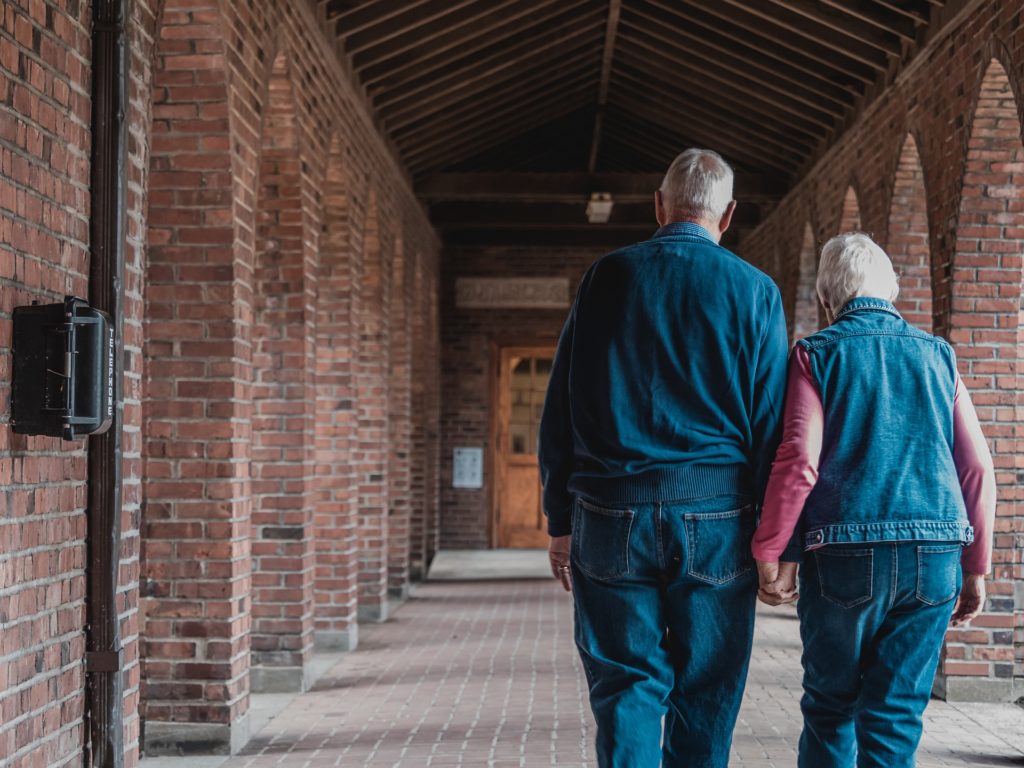Xin-Yun Lu, MD, PhD, (center) with Graduate Student Kirstyn Denney (left) and Postdoctoral Fellow Yuting Chen, PhD, both coauthors on the new paper CREDIT Michael Holahan, Augusta University
It’s clear that chronic stress can impact our behavior, leading to problems like depression, reduced interest in things that previously brought us pleasure, even PTSD.
Now scientists have evidence that a group of neurons in a bow-shaped portion of the brain become hyperactive after chronic exposure to stress. When these POMC neurons become super active, these sort of behavioral problems result and when scientists reduce their activity, it reduces the behaviors, they report in the journal Molecular Psychiatry.
Scientists at the Medical College of Georgia at Augusta University looked in the hypothalamus, key to functions like releasing hormones and regulating hunger, thirst, mood, sex drive and sleep, at a population of neurons called the proopiomelanocortin, or POMC, neurons, in response to 10 days of chronic, unpredictable stress. Chronic unpredictable stress is widely used to study the impact of stress exposure in animal models, and in this case that included things like restraint, prolonged wet bedding in a tilted cage and social isolation.
They found the stressors increased spontaneous firing of these POMC neurons in male and female mice, says corresponding author Xin-Yun Lu, MD, PhD, chair of the MCG Department of Neuroscience and Regenerative Medicine and Georgia Research Alliance Eminent Scholar in Translational Neuroscience.
When they directly activated the neurons, rather than letting stress increase their firing, it also resulted in the apparent inability to feel pleasure, called anhedonia, and behavioral despair, which is essentially depression. In humans, indicators of anhedonia might include no longer interacting with good friends and a loss of libido. In mice, their usual love for sugar water wains, and male mice, who normally like to sniff the urine of females when they are in heat, lose some of their interest as well.
Conversely when the MCG scientists inhibited the neurons’ firing, it reduced these types of stress-induced behavioral changes in both sexes.
The results indicate POMC neurons are “both necessary and sufficient” to increase susceptibility to stress, and their increased firing is a driver of resulting behavioral changes like depression. In fact, stress overtly decreased inhibitory inputs onto POMC neurons, Lu says.
The POMC neurons are in the arcuate nucleus, or ARC, of the hypothalamus, a bow-shaped brain region already thought to be important to how chronic stress affects behavior.
Occupying the same region is another population of neurons, called AgRP neurons, which are important for resilience to chronic stress and depression, Lu and her team reported in Molecular Psychiatry in early 2021.
AgRP neurons, better known for their role in us seeking food when we are hungry, are known to have a yin-yang relationship with POMC neurons: When AgRP activation goes up, for example, POMC activation goes down.
“If you stimulate AgRP neurons it can trigger immediate, robust feeding,” Lu says. Food deprivation also increases the firing of these neurons. It’s also known that when excited by hunger signals, AgRP neurons send direct messages to the POMC neurons to release the brake on feeding.
Their studies found that chronic stress disrupts the yin-yang balance between these two neuronal populations. Although AgRP’s projection to POMC neurons is clearly important for their firing activity, the intrinsic mechanism is probably the major mechanism underlying hyperactivity of POMC neurons by chronic stress, Lu says.
The intrinsic mechanism may include potassium channels in POMC neurons that are known to respond to a range of different signals, and when open, lead to potassium flowing out of the cell, which dampens neuronal excitation. While the potential role of these potassium channels in POMC neurons in response to stress needs study, the scientists suspect stress also affects the potassium channels and that opening those channels might be a possible targeted treatment to restrain the wildly firing POMC neurons.
Excessive activity of neurons is also known to produce seizures and there are anticonvulsants given to open potassium channels and decrease that excessive firing. There is even some early clinical evidence that these drugs might also be helpful in treating depression and anhedonia, and what the Lu lab is finding may help explain why.
Lu hasn’t looked yet, but she wants to further explore the role of these channels to better understand how stress affects them in POMC neurons and how best to target the channels if their findings continue to indicate they play a key role in exciting POMC neurons.
Chronic stress affects all body systems, according to the American Psychological Association. Even muscles tense to keep our guard up against injury and pain. Stress can cause shortness of breath, particularly in those with preexisting respiratory problems like asthma. Longer term, it can increase the risk for hypertension, heart attack and stroke, even alter the good bacteria in our gut that helps us digest food.


